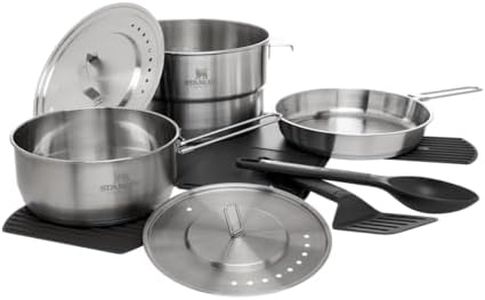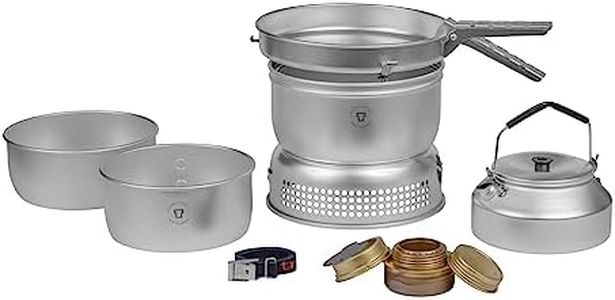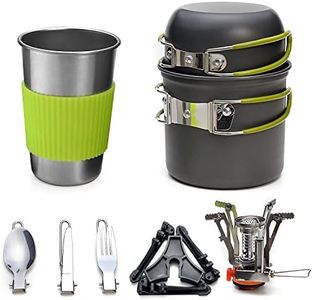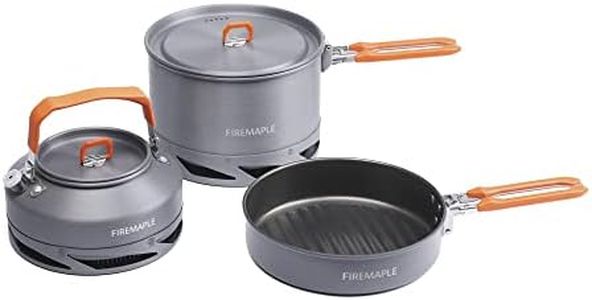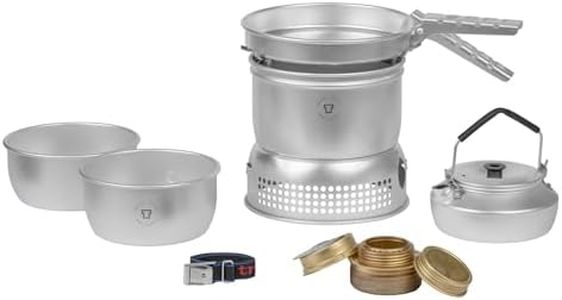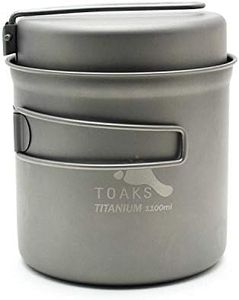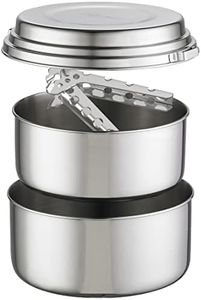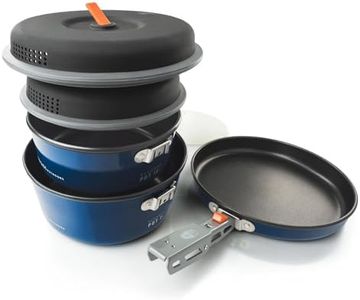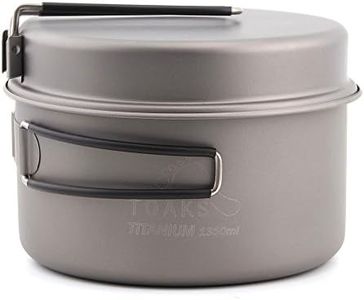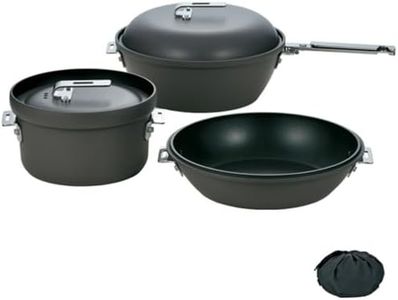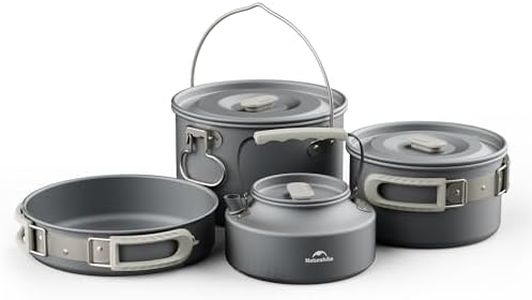We Use CookiesWe use cookies to enhance the security, performance,
functionality and for analytical and promotional activities. By continuing to browse this site you
are agreeing to our privacy policy
10 Best Backpacking Cookware Sets
From leading brands and best sellers available on the web.Buying Guide for the Best Backpacking Cookware Sets
When choosing a backpacking cookware set, the key is finding the balance between weight, durability, and the kind of meals you want to prepare in the backcountry. Backpacking often means carrying everything on your back, so every ounce matters. You'll want cookware that's light and compact but still matches your cooking needs and group size. Think about where and how you’ll use it—simple boiling, gourmet trail meals, or anything in between. The right set will make meal prep enjoyable without weighing you down.MaterialCookware material matters because it impacts weight, durability, heat distribution, and how easy it is to clean. The most common materials are aluminum, titanium, and stainless steel. Aluminum is lightweight and affordable, with good heat conduction, but can dent easily. Titanium is even lighter and nearly as strong as steel, making it great for ultralight backpackers, though it tends to have hot spots and can be expensive. Stainless steel is heavier but very tough and resistant to scratches, making it a good pick for more rugged or communal use. If you value lightness and don’t mind a bit more care, titanium or aluminum are good; for robustness and longevity, stainless steel is ideal.
Weight and PackabilitySince backpacking means carrying your gear over long distances, the weight and how well the set packs are crucial. Lighter sets (often titanium or minimalist aluminum) are easier to carry and ideal for solo or minimalist hikers, but may only support basic cooking. Heavier sets with more pieces are better for groups or more elaborate meals, but can be cumbersome. Look for nesting features or foldable handles to maximize packability and fit all pieces into the smallest space possible. Choose based on your pack's space and your preference for comfort versus carrying ease.
Number of PiecesThis spec refers to how many pots, pans, cups, lids, and utensils are included. Fewer pieces mean a lighter, more compact kit that’s perfect for solo trips or those who only boil water for simple meals. More pieces allow for variety in cooking (like frying or serving multi-course meals) and suit groups or those who like versatility. Think about your trip style: if you love creative camp meals or are cooking for more than one person, a bigger set might be useful. If you mostly rehydrate meals, a simpler kit is better.
Capacity/VolumeThe capacity or volume of pots and pans tells you how much food or water you can prepare at once. Smaller pots (under 1 liter) are plenty for solo hikers making simple meals or drinks. Medium sizes (1-2 liters) generally suit two people or cooking more than just boiling water. For three or more people, or for more elaborate meals, larger pots (2 liters and up) are helpful. Always match capacity to your group size and cooking style; bigger isn’t always better if you’re traveling light.
Nonstick CoatingSome cookware features a nonstick coating, which makes cooking and cleaning easier—especially great for frying or more involved recipes. However, nonstick surfaces can wear out over time and may be less durable in tougher conditions. If you plan on sticking to boiling water or soups, non-nonstick is often fine. If you like making pancakes or eggs, or just want easy cleaning, nonstick might be worth considering. Just handle nonstick surfaces carefully to avoid damaging them.
Compatibility with StovesNot all cookware works equally well with every type of backpacking stove. Heavier or wider pots are better for group cooking and more stable on larger stoves, while narrow pots suit small, lightweight stoves typically used for solo meals. Some sets even nest fuel canisters or stoves inside for packing efficiency. Check that your cookware sits securely on your preferred stove and that you can fit all cooking gear together as needed.
Ease of CleaningBackcountry cooking means sometimes cleaning up with limited water or resources. Simpler designs with smooth interiors and fewer crevices are much easier to clean. Nonstick coatings can help, but so can opt for basic pots and cups with straight edges. Picking easy-to-clean cookware makes mealtime less of a chore, especially on longer trips.
